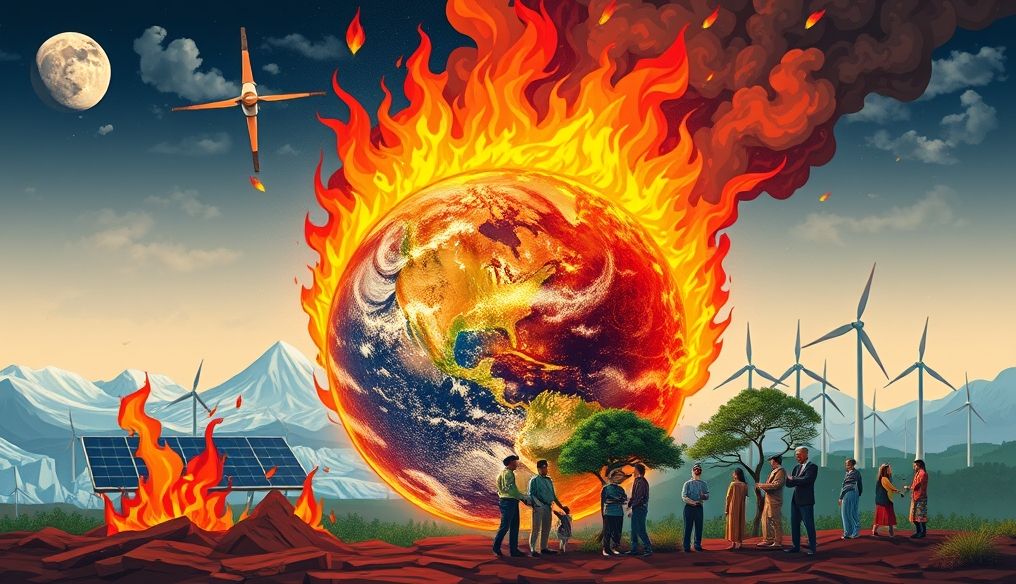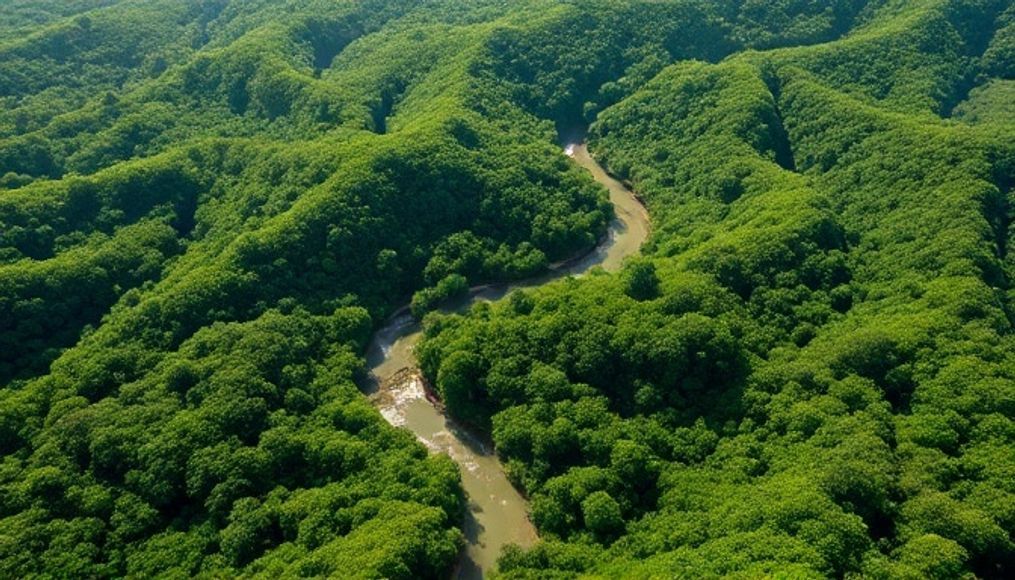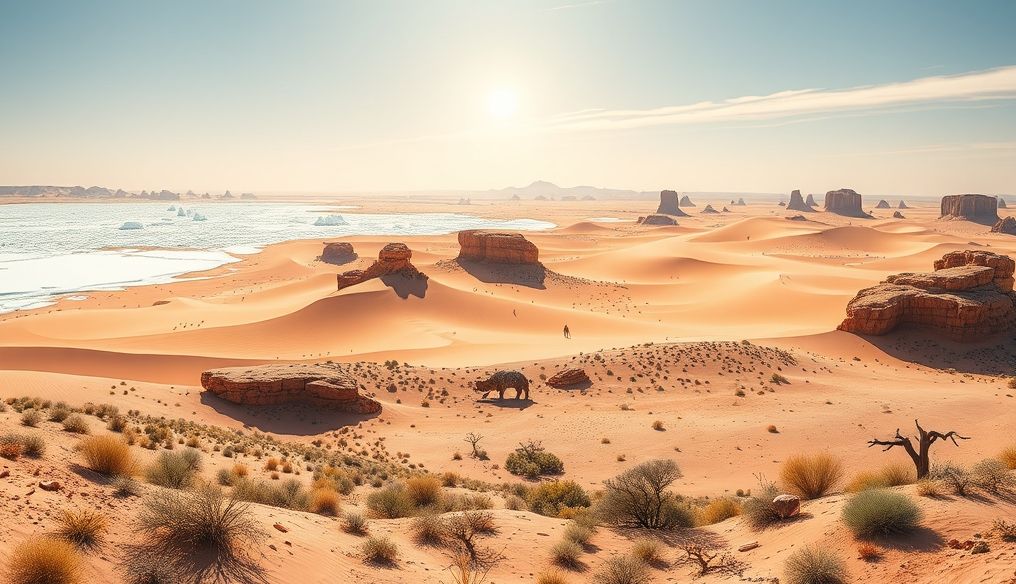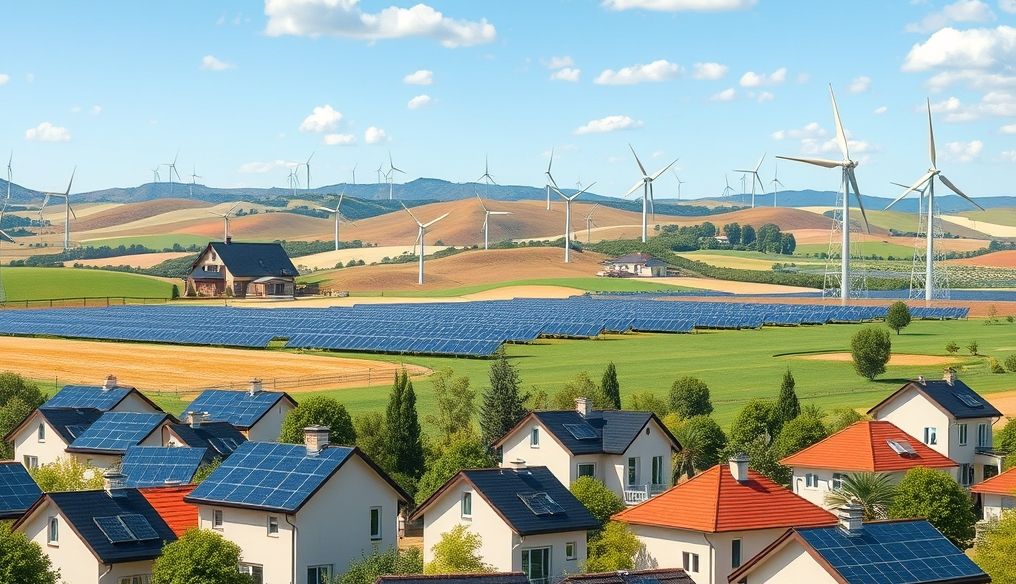What is Global Warming?
Global warming is the gradual increase in the average temperature of the Earth's surface and oceans. This increase is mainly attributed to the increased concentration of greenhouse gases in the atmosphere, which trap heat and prevent it from escaping into space.
What are Greenhouse Gases?
Greenhouse gases are gaseous components in the atmosphere that absorb and re-emit infrared radiation, leading to an increase in Earth's temperature. The most important greenhouse gases include:
- Carbon Dioxide (CO2): Produced by burning fossil fuels (coal, oil, and natural gas) and deforestation.
- Methane (CH4): Produced by agriculture, livestock farming, and waste decomposition.
- Nitrous Oxide (N2O): Produced by the use of nitrogenous fertilizers in agriculture and certain industrial processes.
- Fluorinated Gases: Used in industry, refrigeration, and air conditioning.
Causes of Global Warming
There are several reasons that contribute to global warming, but the most important are:
Burning Fossil Fuels
Burning fossil fuels (coal, oil, and natural gas) is the primary source of carbon dioxide emissions. These fuels are used to generate electricity, power factories, and transportation.
Deforestation
Forests play a vital role in absorbing carbon dioxide from the atmosphere. When trees are cut down or burned, the carbon stored in them is released into the atmosphere, increasing the concentration of carbon dioxide.
Agriculture
Agriculture contributes to methane and nitrous oxide emissions. Methane is produced by livestock farming (especially cows) and rice cultivation, while nitrous oxide is produced by the use of nitrogenous fertilizers.
Industrial Processes
Some industrial processes release potent greenhouse gases, such as fluorinated gases. These gases are used in industry, refrigeration, and air conditioning.
Effects of Global Warming
Global warming has devastating effects on the environment, economy, and society. These effects include:
Sea Level Rise
Rising Earth temperatures lead to the melting of glaciers and ice sheets, increasing the volume of water in the oceans. This leads to sea level rise, threatening coastal areas and low-lying cities.
Statistic: Estimates suggest that sea levels could rise by 1 meter by the end of the 21st century, putting hundreds of millions of people at risk of flooding.
Changes in Weather Patterns
Global warming leads to changes in weather patterns, increasing the intensity and frequency of extreme weather events, such as:
- Droughts: Lead to water shortages and the degradation of agricultural land.
- Floods: Lead to property destruction and the spread of disease.
- Hurricanes: Become stronger and more destructive.
- Heat Waves: Increase the risk of heat-related illnesses and death.
Impacts on Agriculture
Global warming affects agriculture by changing rainfall patterns and increasing temperatures. This can lead to reduced crop yields and an increased risk of famine.
Impacts on Human Health
Global warming affects human health by increasing the spread of infectious diseases, increasing the risk of heat-related illnesses, and worsening air quality.
Impacts on Biodiversity
Global warming leads to the loss of natural habitats and the extinction of species. Species living in polar regions and mountain highlands are particularly affected.
How Can We Reduce Global Warming?
There are many actions we can take to reduce global warming, at the individual, governmental, and international levels. These actions include:
Reducing Greenhouse Gas Emissions
We can reduce greenhouse gas emissions by:
- Using Renewable Energy Sources: Such as solar, wind, and hydropower.
- Improving Energy Efficiency: In homes, buildings, factories, and transportation.
- Reducing Reliance on Fossil Fuels: By using public transportation, cycling, and walking.
- Planting Trees: To absorb carbon dioxide from the atmosphere.
- Reducing Meat Consumption: Because meat production contributes to methane emissions.
Adapting to the Effects of Global Warming
In addition to reducing greenhouse gas emissions, we must also adapt to the inevitable effects of global warming. This includes:
- Building Barriers to Protect Coastal Areas from Sea Level Rise.
- Developing Drought-Resistant Crops.
- Improving Early Warning Systems for Extreme Weather Events.
- Developing Plans for Responding to Natural Disasters.
International Cooperation
Reducing global warming requires international cooperation. All countries must work together to reduce greenhouse gas emissions and adapt to the effects of global warming.
The Role of Individuals in Combating Global Warming
Individuals can play an important role in combating global warming by making sustainable choices in their daily lives. These choices include:
- Conserving Energy at Home: By turning off lights and electronic devices when not in use and using LED bulbs.
- Reducing Water Consumption: By fixing leaks and using water-saving showerheads.
- Recycling: To reduce the amount of waste sent to landfills.
- Buying Sustainable Products: Such as products made from recycled materials and organic products.
- Supporting Companies Committed to Sustainability.
- Raising Awareness of Global Warming and Encouraging Others to Take Action.
Investing in Green Technologies
Investing in green technologies, such as renewable energy, energy storage, and electric vehicles, can help accelerate the transition to a low-carbon economy.
Conclusion
Global warming is a serious global challenge that requires urgent action. By working together, we can reduce greenhouse gas emissions, adapt to the effects of global warming, and protect our planet for future generations.
Remember: Every small action we take makes a difference!




